Like a Dragon: Ishin! is a Great Series Entry Point
Meiji Restoration...Like a Dragon style
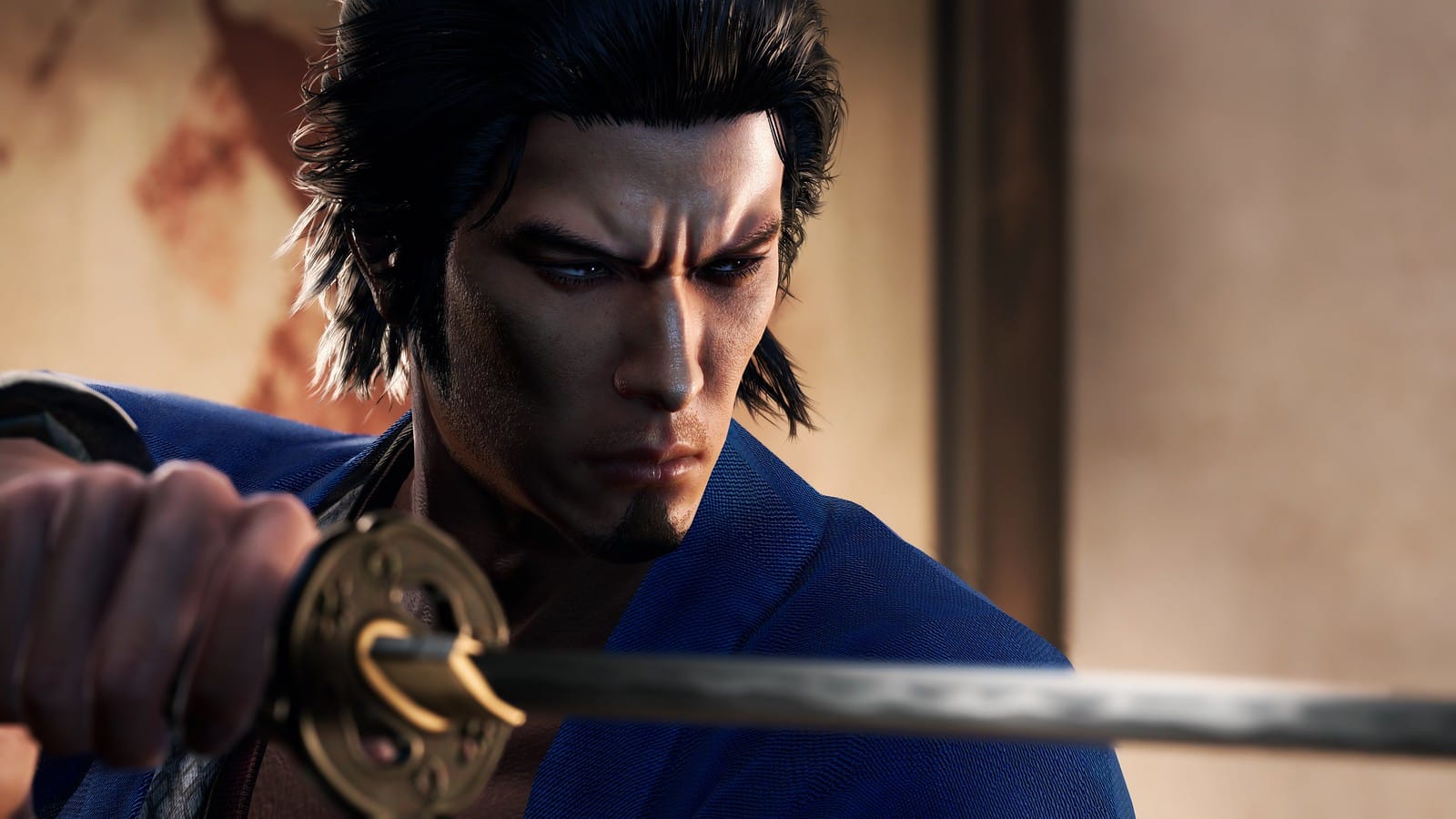
Like a Dragon: Ishin! has become a new entry point to the Like a Dragon (LaD) series thanks to its brilliant take on the acclaimed series formula in a setting uniquely detached from its complex main storyline. Originally a Japan-exclusive PS4 title released in 2014, Ishin takes place during Japan’s Bakumatsu period (1853–1867), a turbulent period in the nation's history marked by the arrival of foreign presence and social unrest stemming from dissatisfaction towards the ruling military government, the Tokugawa Shogunate. As a result, Japan was majorly split into two factions: those seeking to restore the emperor’s rule over Japan and those fighting to keep the shogunate in the seat of power.
Set in 1866, Ishin marks a departure from staple locations such as Tokyo and Osaka to Kyo (now Kyoto), which was at that time the capital city of Japan. Players assume the role of Sakamoto Ryoma, a low-ranking samurai from Tosa (now Kochi Prefecture) based on the real Japanese historical figure of the same name. Real-life Sakamoto Ryoma was regarded as one of the most influential figures of Japanese history who aided Japan modernization by negotiating the resignation of then-Shogun Tokugawa Yoshinobu in 1867.
Staking a claim in history
In Ishin, Ryoma’s journey diverges and converges with his real-life counterpart. In Ishin, Ryoma ventures from Tosa to Kyo under the alias Saito Hajime to find the one responsible for the murder of someone close to him, and it is in Kyo he infiltrates the ranks of the shinsengumi, an elite police force serving under the shogunate. Of course, real Japanese historical figure Saito Hajime was also a high-ranking member of the shinsengumi, but he's individually separated from Ryoma altogether in the game.
Is a pattern starting to emerge here? If it wasn’t obvious already, there is indeed: the story of Ishin has players meet and interact with key figures of the Bakumatsu period, from politicians to retainers to legendary swordsmen, only this time reimagined as LaD characters. Even Ryoma himself has the face and voice of series protagonist Kazuma Kiryu.
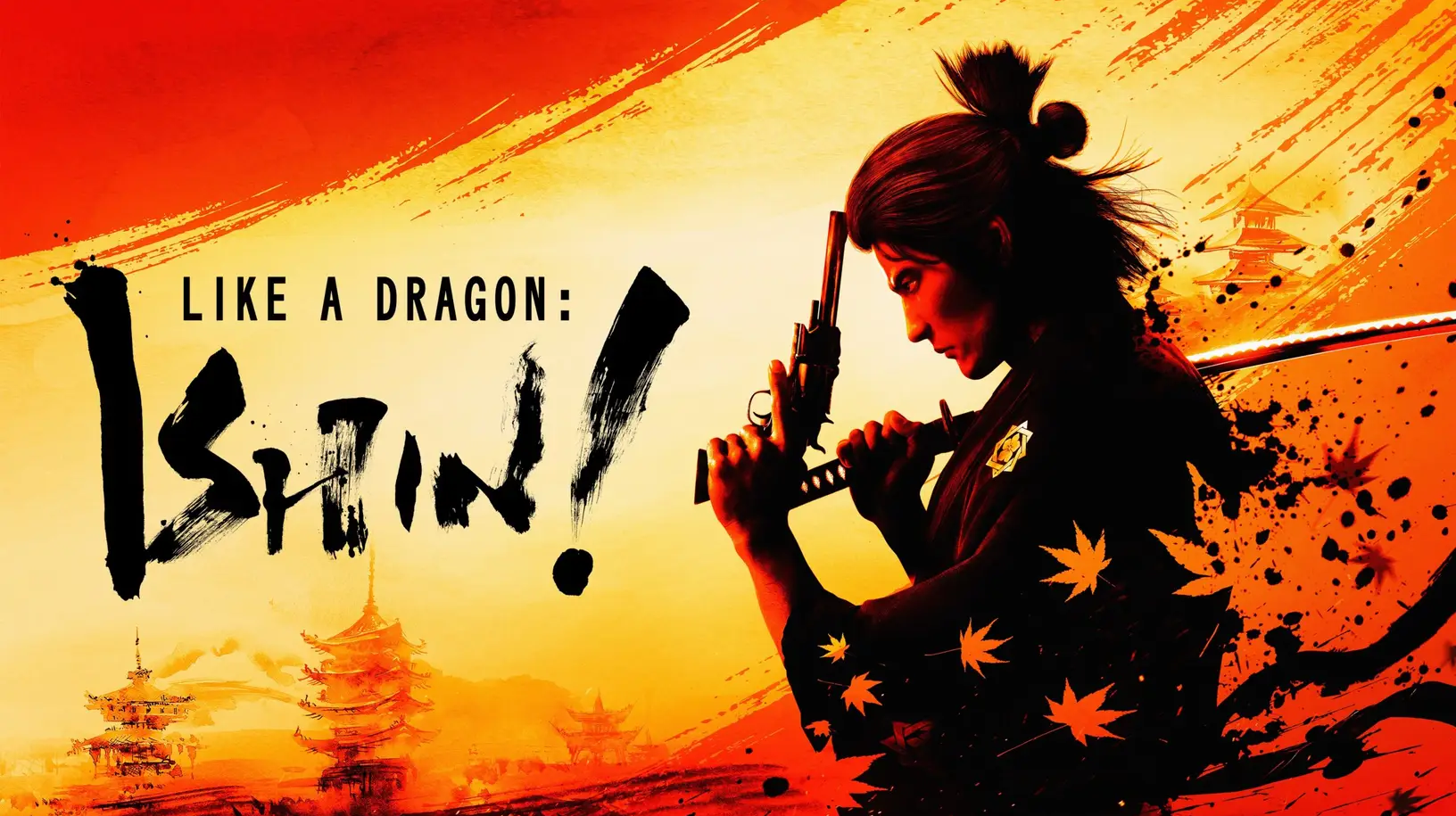
However, these characters, apart from their looks and their voices, are their own individuals separate from their mainline counterparts. Players have no need to play previous LaD games to understand their roles and contexts, since the story itself is completely isolated from the main series. If anything, experiencing these characters can give a bit of insight (although not always in parallel) to their roles in mainline LaD games. This allows for newcomers unfamiliar with LaD lore to experience iconic series characters without having to catch up on the previous games.
Apart from the fan service for veterans and charm for newcomers, Ishin presents a riveting story filled with its fair share of intrigue and twists. Ryoma’s journey also involves an engaging expansion from the personal to the political, where Ryoma (much like his real-life counterpart) must deal with restoring power to the emperor and abolishing of the archaic social class system. With the gradual expansion of the story’s scope, players get to witness momentous events in Japanese history garnished with that unique LaD flavor. There is a sense of scale, high stakes, and grandiosity in Ryoma’s epic journey, befitting his role as one of the most influential political figures in the Meiji Restoration.
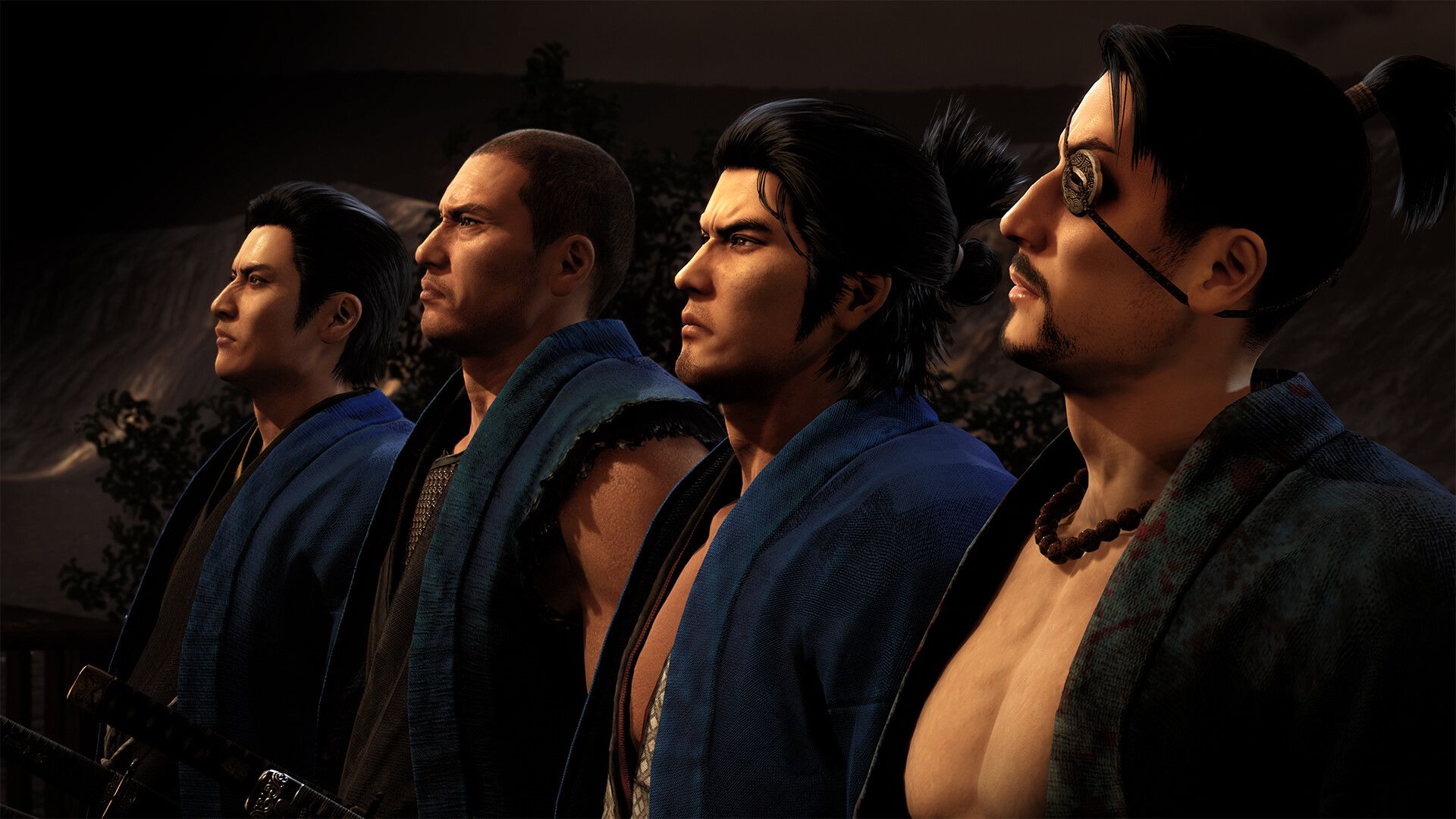
On the personal front, Ryoma’s relationships with other major characters are where he shines. They're often dramatic and full of emotional stakes and moments coupled with a strong sense of attachment and camaraderie between Ryoma and the people close to him. Ryoma, while retaining Kiryu’s stoicism, has a more vocal personality. His relationships with his peers often reveals a vulnerable side to his hard exterior, and as a result he is more likely to exhibit outward reactions towards the dramatic parts of the story. This makes Ryoma more like the brash and bold Kiryu from Yakuza 0 compared to the stoic and mature Kiryu from the other LaD games.
Bakumatsu bliss
Speaking of other LaD games, both veterans and newcomers alike should be pleased to know that Ishin, despite its departure in setting, manages to retain that signature LaD charm. The city of Kyo paints an interesting image of Japan during the Edo period, and although it's not as sophisticated as Tokyo’s Kamurocho or Osaka’s Sotenbori (the settings of other games in the series) it still has a strong sense of culture and identity. At the same time, signs of modernization such as the spreading usage of firearms sets Ishin apart from games with a similar setting. This is Japan during its transitional period from feudal to modern, and Ishin manages to capture that tumultuous period.
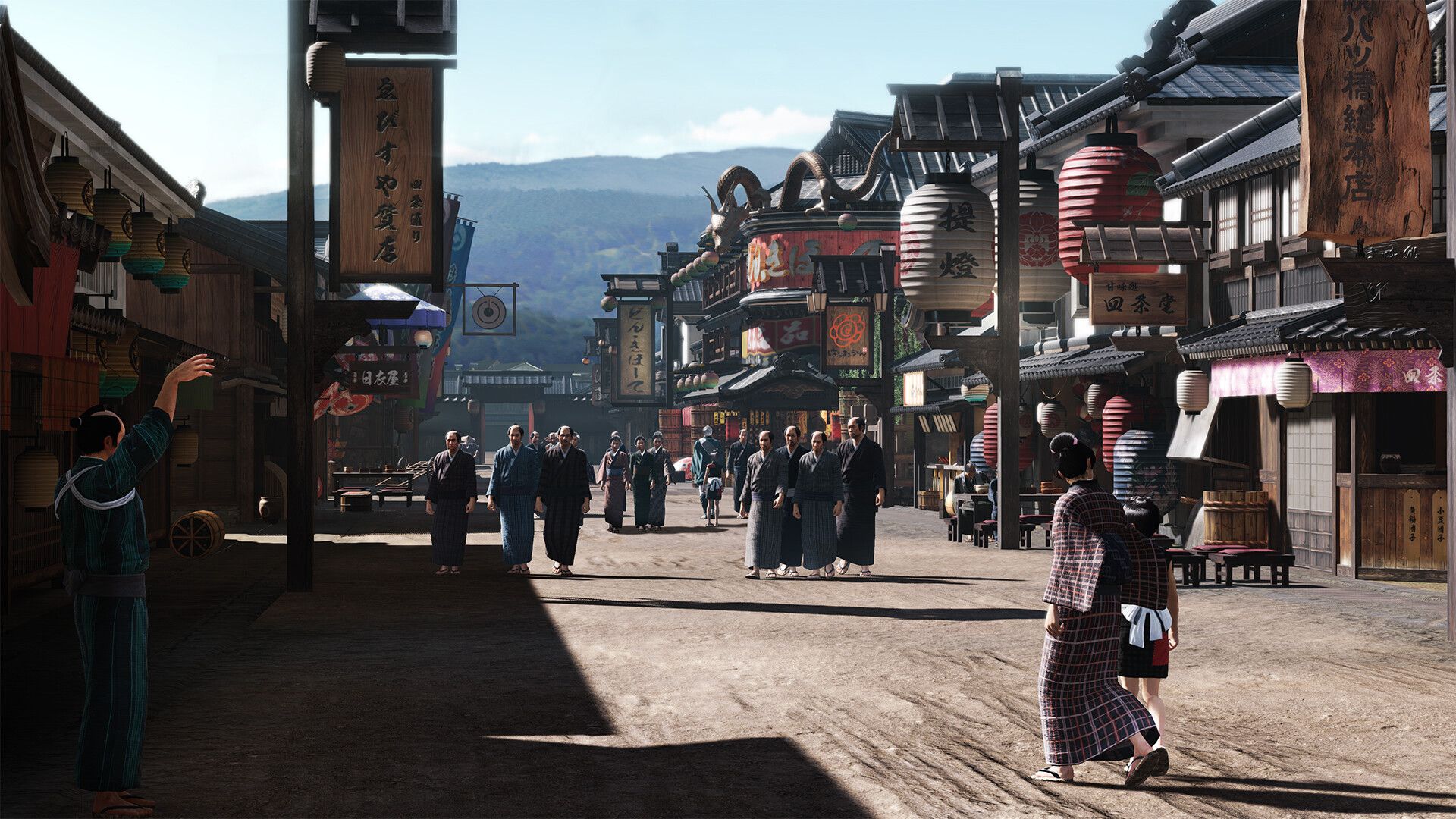
Ishin’s insanely in-depth worldbuilding comes in the form of its side activities. Players can partake in lucrative chicken race betting, serve udon, manage their personal homestead farm, learn the traditional art of nihon-buyo dancing, and of course, sing the legendary “Baka Mitai” song in traditional singing bars!
Complementing varied side activities are the sub-stories, which are the equivalent of side quests found in most open-world games. They all stay true to their roots by translating that absurd LaD energy into 1860s Japan, but this time the substories serve an additional purpose: they are also a looking glass through which we can see Japan in the Edo period, particularly its social norms and issues. In one story, Ryoma can have his clothes comically stolen while relaxing in a bathhouse; in another he can have insightful conversations with English diplomat Ernest Satow about Japan’s current affairs. These substories not only flesh out Ryoma as a character, but also the world around him.
Dance of the four unrestful flowers
But of course, Ishin’s entertainment value does not come from its side activities alone; that's where its combat system comes in. Players can utilize four fighting styles in Ishin: fighting hand-to-hand with Brawler, using a gun as a Gunman, a sword as a Swordsman, or dual wielding a sword and a gun as a Wild Dancer. It's also worth noting that the original Ishin is the first LaD game to use this multiple fighting style system, well before it became the staple in Yakuza 0 and Yakuza Kiwami.
Unfortunately, being a remake of a 2014 game with its last-generation tendencies, combat in Ishin can feel clunky, slow, and at times overly rigid. Ryoma’s movements can sometimes feel sluggish and lack the satisfying finesse that modern LaD games have. This can be mitigated with upgrades to each fighting style’s respective skill trees, but it doesn't quite fix the slightly janky feeling of Ishin’s combat.
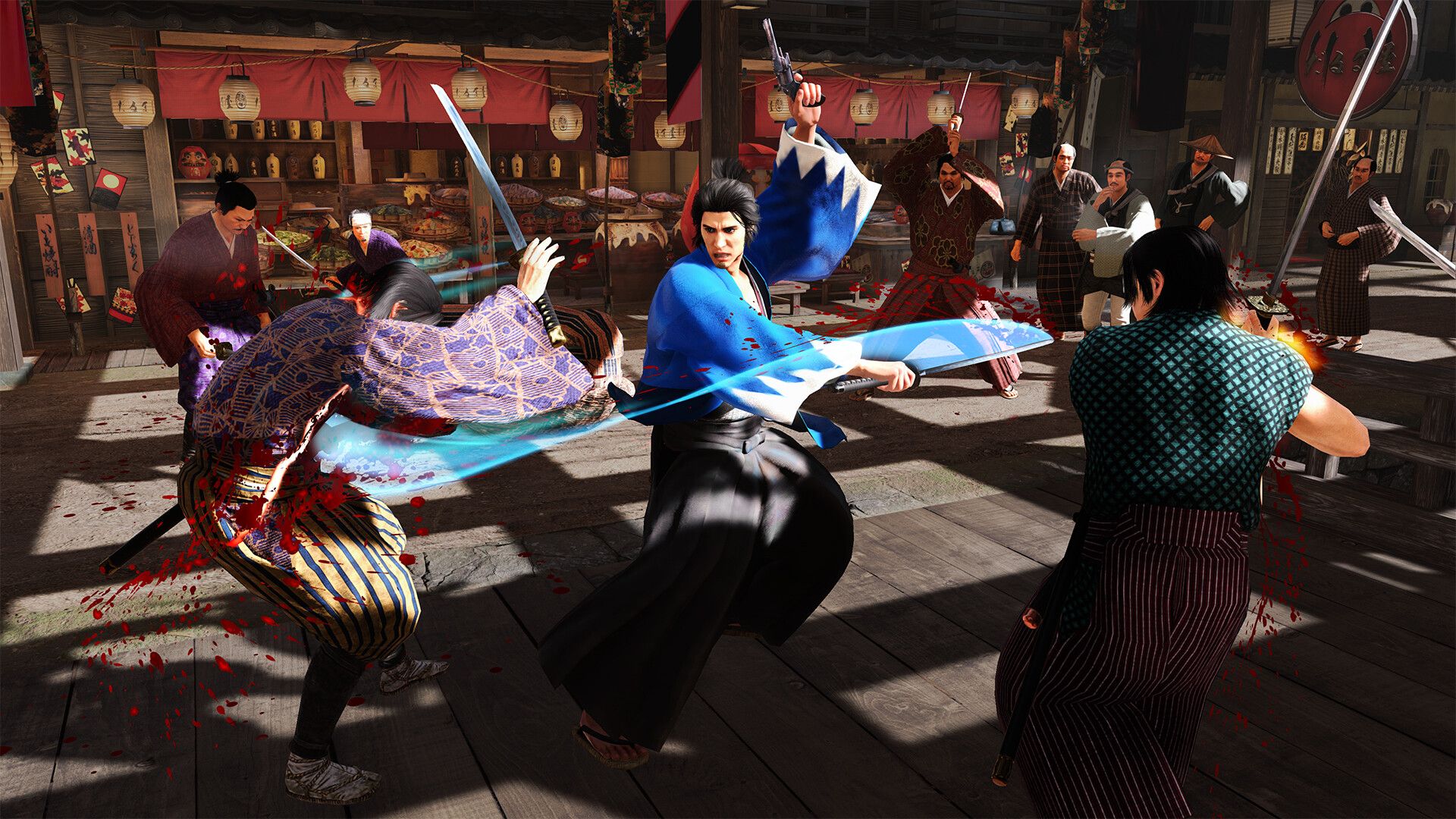
Regardless of this drawback, Ishin’s deep combat system encourages adaptability with each fighting style offering their own merits and unique abilities, from parries to dodges to deadly counters. Speaking of deadly counters, the legendary Tiger Drop move made famous in LaD's mainline games returns to Ishin, only now coming in Gunman and Swordsman variations! And despite not having a powerful counterattack move such as that, the Wild Dancer class remains the most unique fighting style available thanks to its graceful combination of speed, style, and lethality.
To further bolster Ryoma’s (and the player’s) fighting abilities, Ishin also has a crafting system where Ryoma can upgrade or craft new swords, guns, or wearable gear divided into head, chest, and arm slots. The system itself is quite extensive, featuring a crafting tree like you'd find in the Monster Hunter series, although in Ishin it's half as deep and twice as grindy, requiring copious number of materials and money. Despite the lengthy requirements, this crafting system still serves to deepen Ishin’s already comprehensive combat system.
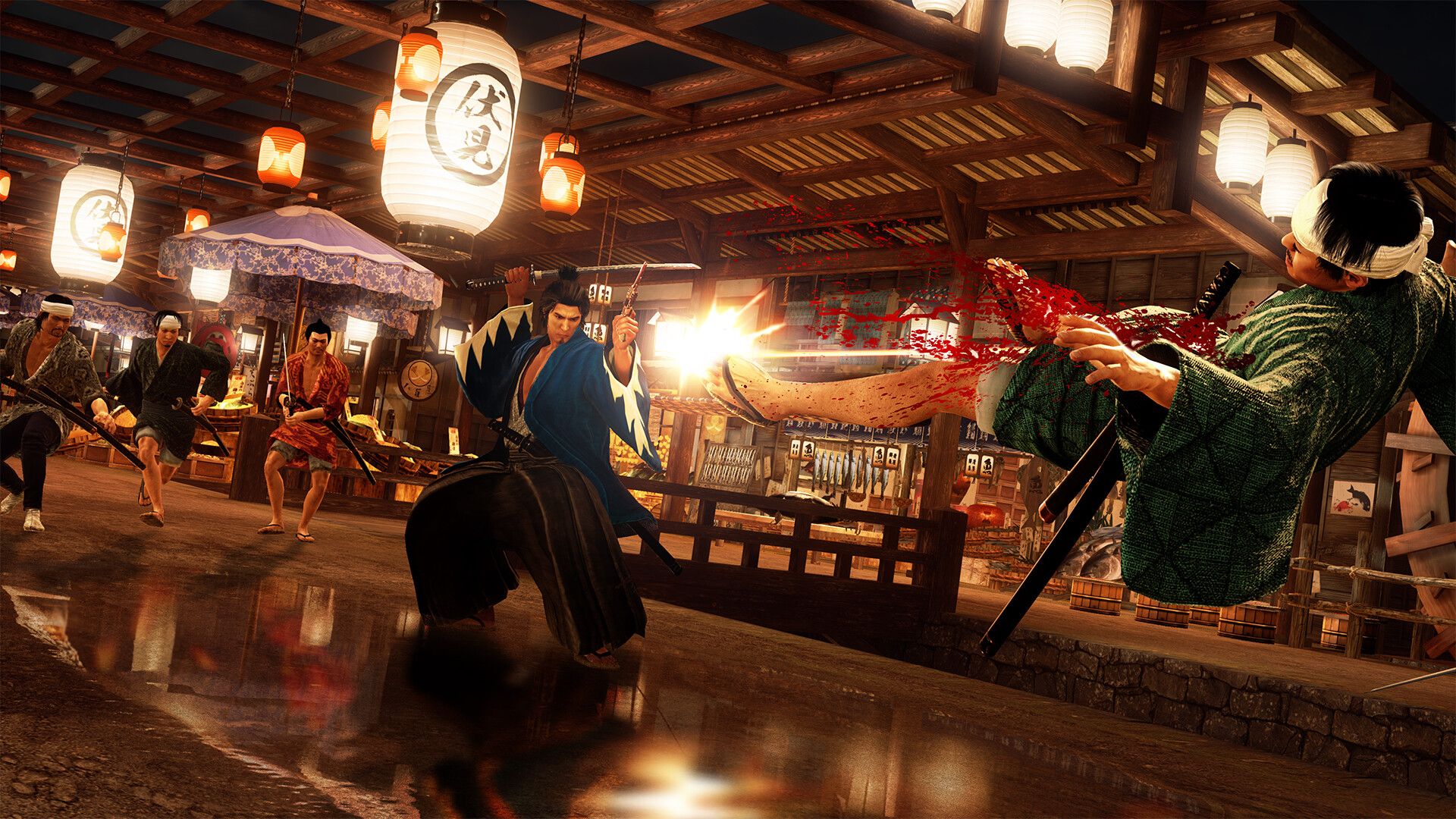
Also featured in Ishin is the trooper card system which grants Ryoma temporary abilities during battle when utilized. The original Ishin only allows trooper card usage in dungeon battles, but in the remake, they have been ‘promoted’ to be usable in all combat scenarios. The abilities themselves range from the subtle to over-the-top, or from simply increasing Ryoma’s attack damage to having him fire ridiculous laser beam attacks. Three cards (four when using certain cards that grant extra card slots) can be assigned to a fighting style at a time, making it possible to have 16 cards equipped.
Despite their hilariously entertaining effects of some of them, these cards can understandably break immersion of the game due to their disconnect from the game’s realistic presentation. But fear not, for it is entirely possible to beat the game without using trooper cards, thanks to the aforementioned fighting style skill trees and crafting system that can close the gap between Ryoma and his adversaries. Trooper cards can be useful in other forms however, where they increase Ryoma’s maximum health when equipped.
To the future
With combat rounding out what Ishin has to offer – in addition to its riveting story and amusing worldbuilding – it can be said that Ishin serves as a great entry point into the Yakuza series. Its detachment from the main series in terms of story and setting makes it welcoming to newcomers, while series veterans will find familiar love in its on-brand gameplay and side content.
So here’s to hoping for more LaD games in the future! The release of Ishin coupled with the looming arrival of two new LaD games only serves to reinforce the hype and excitement around this great franchise. Since Ishin was inspired by the success of Ghost of Tsushima, here’s hoping that developer RGG Studios would consider remaking LaD’s zombie spinoff Yakuza: Dead Souls – this time perhaps in drawing from the success of Dead Island 2.
Fingers crossed!
